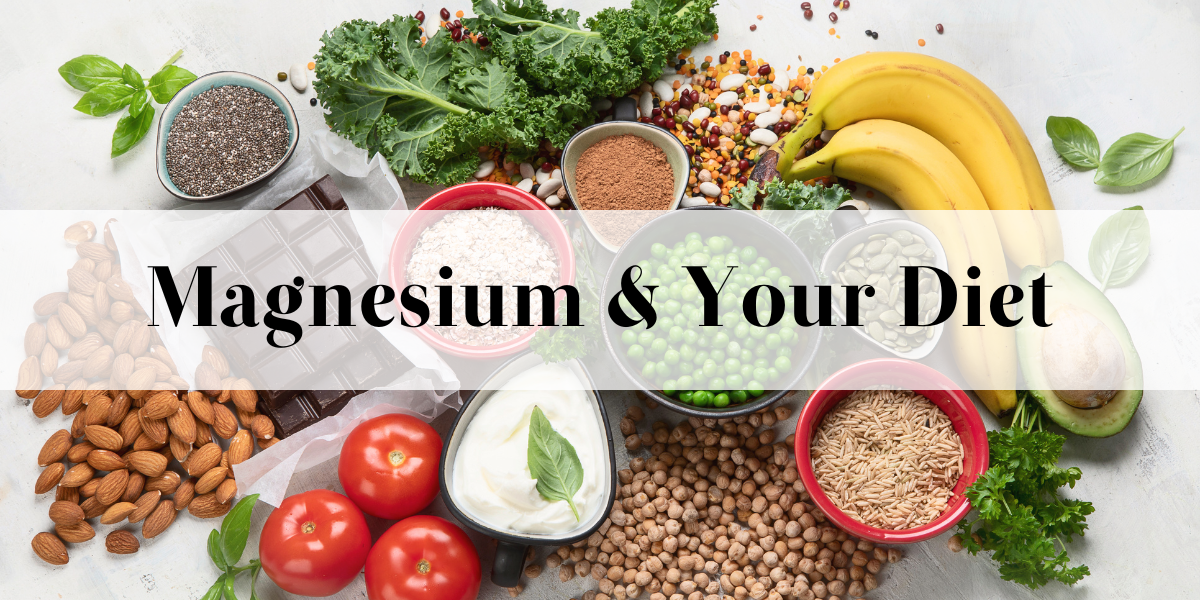
Magnesium and Your Diet
|
|
Time to read 4 min
|
|
Time to read 4 min
Magnesium is a vital mineral that plays a crucial role in many aspects of our health, from supporting strong bones and muscles to maintaining a healthy heart and regulating blood sugar. It helps with energy production, nerve function, and digestion, making it essential for overall well-being. Ensuring you get enough magnesium through your diet is key, as a deficiency can lead to a variety of health issues. Let's dive into why magnesium is so important and how you can make sure you're getting enough of it.
Legumes:
|
Leafy Greens:
|
Seeds and Nuts:
|
Other Rich Sources:
• Dark chocolate (70-85% cocoa): 64 mg per ounce
• Avocados: 58 mg per medium fruit
• Bananas: 32 mg per medium fruit
• Whole grain products
• Tofu (53 mg per cup)
Food Preparation Tips to Maximize Magnesium absorption through food preparation and optimal combinations:
• Crush or chop garlic 10 minutes before cooking to activate beneficial compounds
• Slice or chop vegetables just before cooking to minimize nutrient loss
• Use the entire vegetable when possible (e.g., broccoli stems contain more minerals than florets)
• Consider fermentation to enhance mineral availability
Pair magnesium-rich foods with healthy fats since magnesium is better
absorbed with fat.
Vitamin D helps magnesium absorption, so try to get adequate sun exposure or vitamin D from foods.
Vitamin B6 improves magnesium absorption and utilization.
Reduce or avoid consuming these foods with magnesium sources as they can interfere with absorption:
|
High Calcium Foods
|
High Iron Foods
|
High Fiber Combinations
|
|
Breakfast Options:
|
Lunch Ideas:
|
Dinner Combinations:
|
|
Morning Meals
|
Pre/Post Exercise
|
Evening Meals
|
These two blog posts come from our recipe blog, where we share nutrient-packed recipes designed to promote health and longevity. Our focus is on delicious, wholesome meals that nourish your body while satisfying your taste buds. In these featured recipes, we highlight magnesium-rich ingredients to help you meet your daily intake in a flavorful and enjoyable way. Whether you're looking for a hearty meal or a refreshing salad, these dishes make it easy to support your well-being with every bite!
This Kale Salad with Cashew Dressing, Butternut Squash, and Chickpea Croutons is a flavorful and nutrient-packed way to boost your magnesium intake. Crisp, curly kale serves as the perfect base, massaged with a creamy, tangy cashew dressing that adds richness and depth. Roasted butternut squash brings a touch of natural sweetness, while crunchy, spiced chickpea croutons provide a satisfying texture and extra plant-based protein. Every bite is a delicious balance of flavors and nutrients, making this salad a wholesome and enjoyable addition to your diet. Perfect as a nourishing lunch or a vibrant side dish, this magnesium-rich recipe fuels your body while delighting your taste buds!
This recipe is a deliciously nourishing dish, packed with anti-inflammatory ingredients and a powerful magnesium boost. With a blend of flavorful spices like garam masala, cumin, and turmeric, this dish combines tender tofu, cauliflower, spinach, and edamame in a creamy coconut milk sauce. Served over brown rice and topped with yogurt, fresh cilantro, and a touch of mango chutney, it's a wholesome and vibrant meal that supports muscle function, bone health, and overall vitality.
Whether you choose to supplement your diet with magnesium-rich foods or explore alternative methods like our soothing magnesium flakes and bath salts, it’s important to find a way to ensure you're getting enough. Magnesium plays a crucial role in your health, and with so many options available, you can easily incorporate it into your routine in a way that works best for you.







